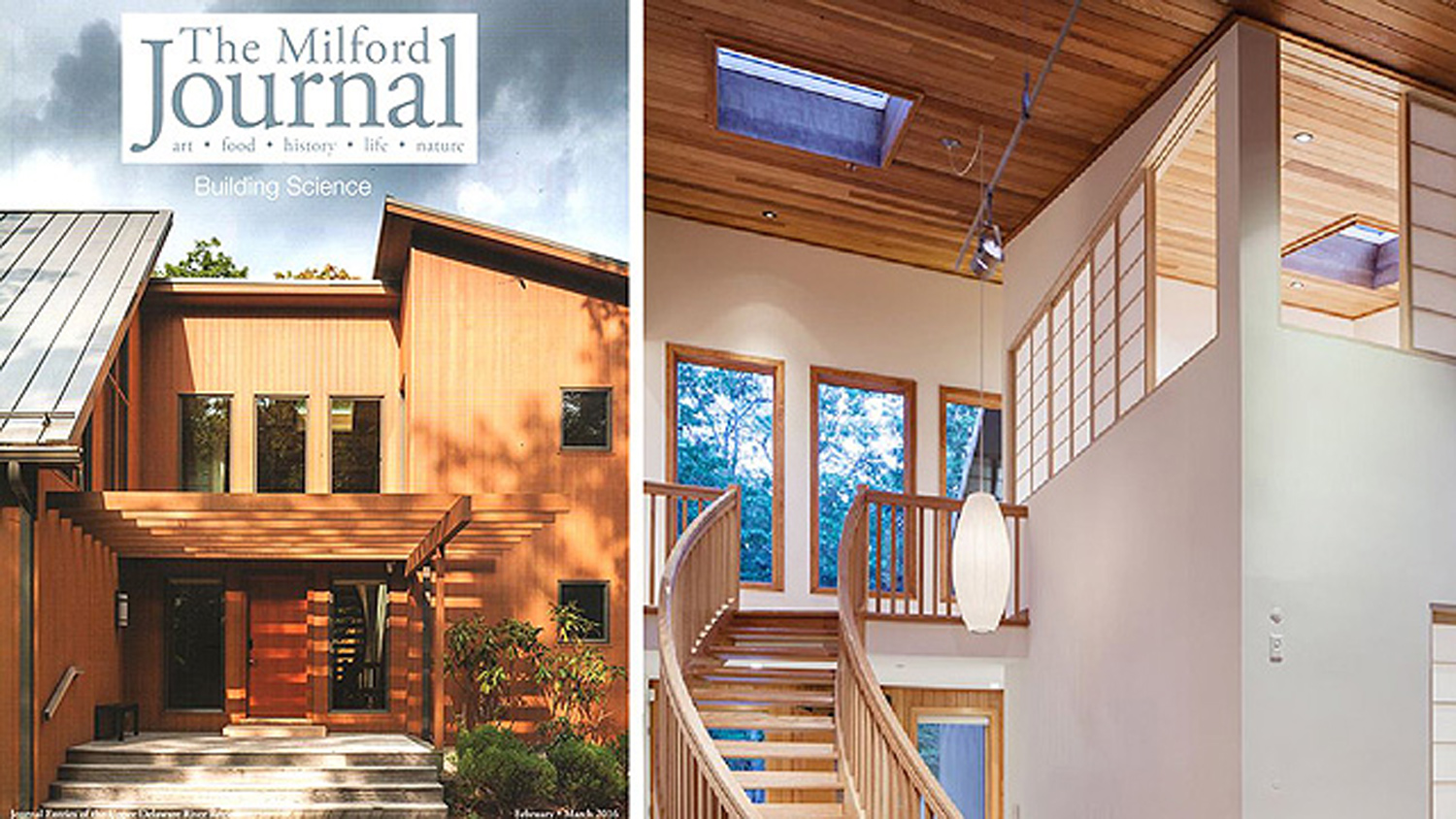News

The Art of Building
 The functional art of building begins, and is guided by, the experience and knowledge of the architect. As the “chief builder,” it is his or her vision that shepherds construction projects through all development phases to completion.
The functional art of building begins, and is guided by, the experience and knowledge of the architect. As the “chief builder,” it is his or her vision that shepherds construction projects through all development phases to completion.
Architect Richard Pedranti listens carefully to his clients’ expressed wishes. Realizing their plans is primary to achieving a structure that suits their specifications. It is a complex task that requires extensive expertise in many areas.
As NY architectural historian and preservationist Morris Kafka explains, “The architect must have a comprehensive knowledge of the most far flung specialties of any artist, which makes her or him not simply an artist but also an historian, literate in various styles and trends and current motifs, a craftsperson, an engineer, a legal expert, a marketer, a diplomat and a bit of a scientist…just to begin with.
Transforming an idea into reality takes many steps. After initial consultation, Pedranti starts the design process with a sketch that is reworked and revised to include ever more detail. Computer modeling allows his clients to take virtual tours around the proposed structure and to test and adjust it to their needs. He returns numerous times to the location to make sure that the plan and the forming of the three dimensions of the building match the aspects of the site that the client
values.

“My job is to make that real for them and to bring out the qualities of the place that are special to them, whether it be the sense of openness, a forest, the views or the light,” Pedranti said.
Pedranti is an active supporter of a shift in global architectural direction toward a greater awareness of the ecological effects that buildings have on the environment. Beginning in the early 1990s, the US Green Building Council developed a rating system called LEED, or Leadership in Energy and Environmental Design, that aids building owners to be more environmentally responsible. He is a certified LEED consultant.
Taking building standards to the next level, Pedranti is an adherent of the Passive House concept, and he just completed the first one ever to be built and officially certified in northeastern Pennsylvania in Scranton.
Conceived in North America in the 1970s and formalized in Europe by two physicists in 1988, the Passive House concept is a rigorous set of design and construction practices that can bring a structure’s energy usage to net zero and reduce its environmental impact. Passive houses meet a very low target for energy consumption for heating and cooling. Through the use of insulation and triple pane windows, passive buildings are airtight but are kept fresh by a ventilation fan, making the house comfortable and healthy. There is plenty of light, too, with the building’s orientation taking advantage of sunlight.
 Currently Pedranti’s firm is working on three Passive House projects, each the first of its kind to be built in their respective geographies.
Currently Pedranti’s firm is working on three Passive House projects, each the first of its kind to be built in their respective geographies.
Pedranti’s interest in architecture was sparked by his childhood, growing up in Milford, PA, with its diversity of great houses and public buildings. There, he is now a board member of the Pike County Historical Society through which he is helping the public to learn more about the many interesting structures throughout the region.
His many hikes around the estate grounds of Gifford Pinchot’s Grey Towers were inspirational as he soaked in the history and natural beauty of the home and grounds of the former governor of Pennsylvania and proponent of the conservation ethic. While building this Milford residence in the late 1800s, the Pinchot family had brought renowned architects to the area.
Pedranti credits slide-show lectures by his Delaware Valley High School art teacher John Millspaugh with giving him a diverse approach to art. “That was my first exposure to the idea that art and architecture are linked. I learned that there are movements and systems and concepts that drive the way these things look. I’ve always been interested in science and art, so architecture seemed like the perfect thing to pursue. Mr. Millspaugh helped me find the
resources to study architecture,” he said.
While Pedranti was in the 11th grade, his parents found a summer program in architecture at Cornell University in Ithaca, NY. With a recommendation from Millspaugh, he took the six-week advanced placement program and found his calling.
After high school, Pedranti acquired his undergraduate degree in architecture at Penn State, which was followed up with a master’s degree in architecture from Harvard. He apprenticed at a number of firms in New York City and worked on a variety of private and public projects, including the $2.5 billion Tokyo International Forum building and the Charlie Rose Production Studio. Establishing his own firm, Richard Pedranti Architect, in New York and then Milford, he currently works on projects throughout the tri-state region.
 Pedranti’s dedication to green building has led him to see that building science is a critical component that is lacking in traditional architecture education. The conventional curriculum is very much focused on aesthetics without giving a holistic understanding of the physics of a building’s internal and external functions.
Pedranti’s dedication to green building has led him to see that building science is a critical component that is lacking in traditional architecture education. The conventional curriculum is very much focused on aesthetics without giving a holistic understanding of the physics of a building’s internal and external functions.
He sees Passive House as a movement to change that. He is working to include the science of building into coursework as an adjunct professor at Temple University and the New York Institute of Technology. “It’s going to change the way buildings look,” he stated.
Driven by the increasing imperatives of an environmentally challenged world, Pedranti advocates a change in the way we live and dwell in our homes and their surroundings. This functional art of building is offering us a new, comprehensive and sustainable paradigm of beauty and form.


To learn more, visit the content throughout this website and www.phius.org. Richard Pedranti’s firm is leading the renovation of the Milford Community House. It is a pro bono project.
Michael Hartnett is the author of the nature fantasy Tales of Allamucha.


Richard,
Very impressed with this Passive House! True example that PH projects don’t have to look like salt boxes to meet PH criteria. I just received my CPHC this year and will email the power point of the 4th PH in Wisconsin. With 3 more on your drawing board, I’ll be expecting to see more great designs. Keep up the good work.
Bruce